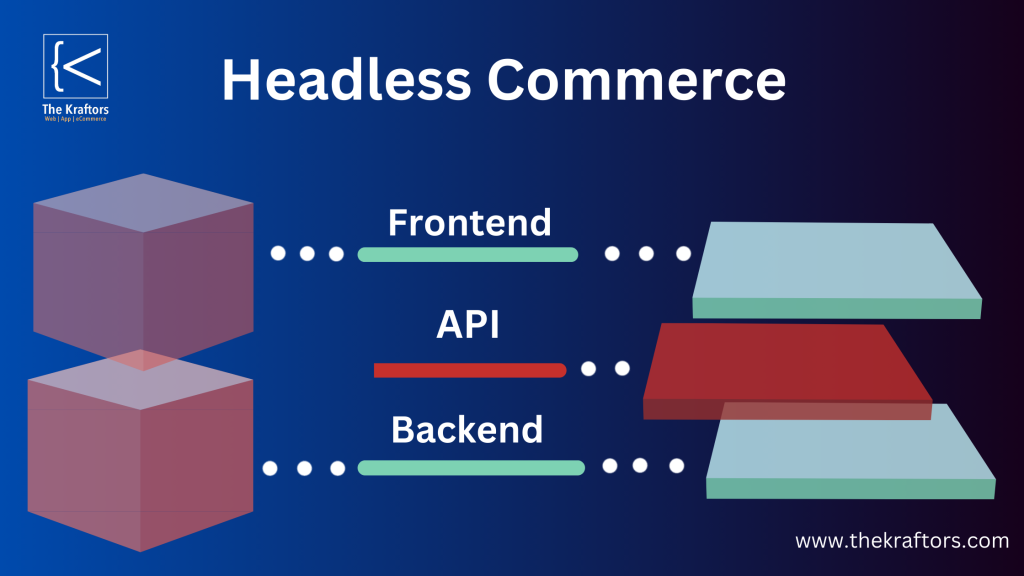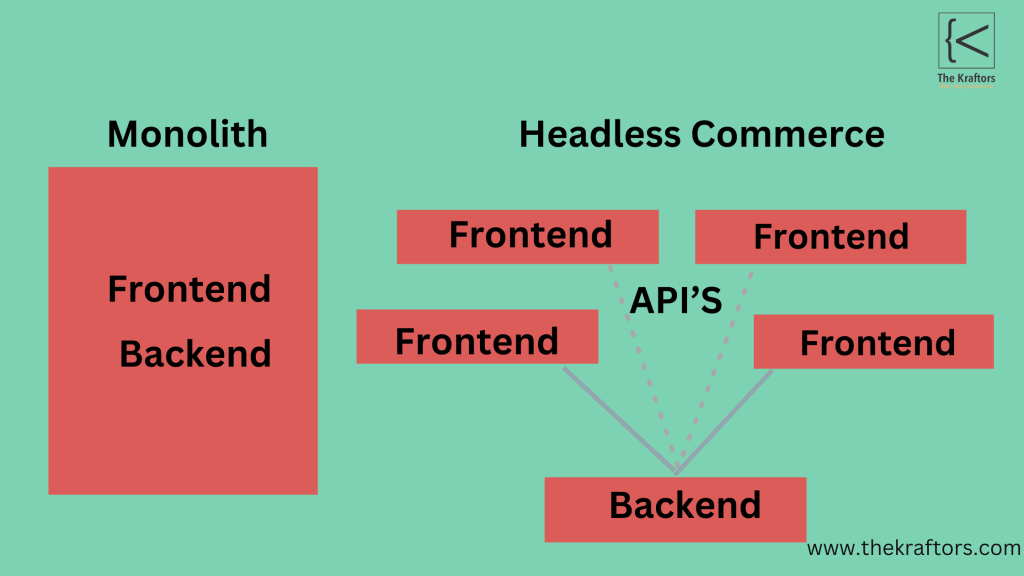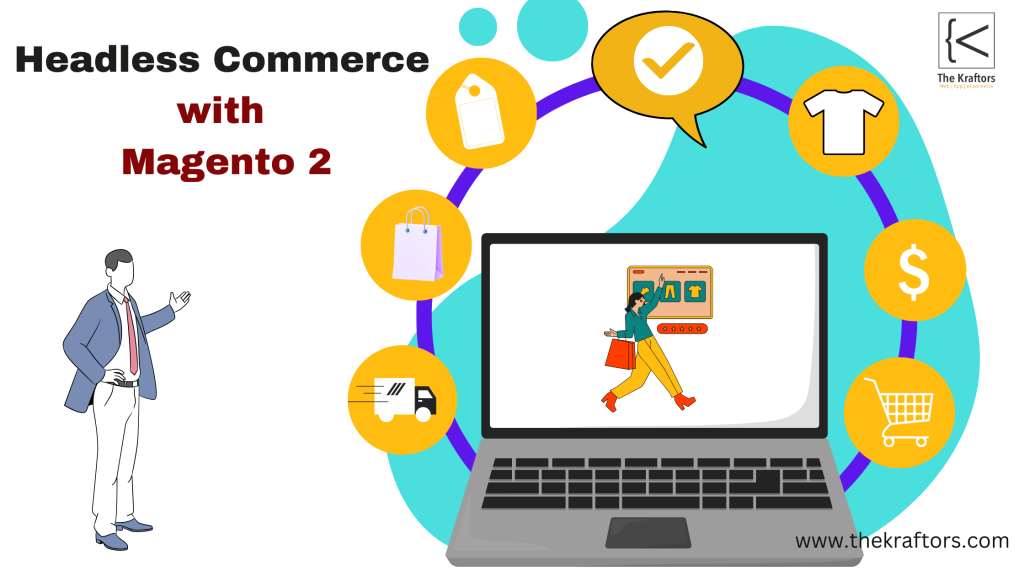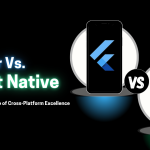Have you ever thought about how e-commerce platforms manage to keep up with the fast pace of technology evolution and changing consumer tastes? Just imagine a world where your online store is not confined to a single platform.
Headless commerce can affect this change, which revolutionizes the e-commerce field. However, what is headless commerce, and how does Magento 2, a leading e-commerce platform, support it?
About Headless Commerce

The term “headless commerce” describes an e-commerce architecture where the back-end commerce features are separate from the front-end interface, known as the “head.” Dividing the front-end and back-end provides greater adaptability and personalization, allowing for changes to the front-end without disrupting back-end processes. It allows developers to design and alter the user interface independently of the e-commerce platform that powers it. For more on customization, check out our Magento 2 Themes and Customization guide.
Benefits of Headless eCommerce

Headless commerce offers several significant advantages:
- Flexibility and Customization
Businesses have the ability to create unique shopping experiences through headless commerce. This means that developers can use any technology framework to build the front-end, thereby increasing personalization and uniqueness in the experiences for users.
- Faster Time to Market
Quick changes to the user interface do not affect the back-end systems. Consequently, new features, improvements, and updates are released more quickly, reducing the time it takes to make these updates public.
- Enhanced Performance
One way to improve website speed is through Headless eCommerce. If your website is faster, then happier customers are more likely to buy things, whether they are buying online goods or services from an individual site.
- Omnichannel Experience
A business can provide a uniform user experience across smartphones, websites, social networks, or Internet of Things-enabled devices. This matters nowadays because we live in a world with many devices, and users want seamless interactions across platforms.
- Scalability
Having the capacity to scale effectively becomes essential as firms expand. This means using headless commerce, which allows dividing between front-end and back‐end components to maintain performance and user experience even when there’s a lot of traffic.
Headless eCommerce vs. Traditional Commerce
Here’s a table that summarizes the key differences between traditional and headless commerce:
| Features | Traditional Commerce | Headless Commerce |
| Front-end and Back-end | Tightly Coupled | Decoupled |
| Flexibility | Limited | Highly Flexible |
| Development Speed | Slower | Faster |
| Omnichannel Experience | Limited | Powerful |
| Scalability | Less Scalable | Highly Scalable |
| Front-end Technology | Limited Choices | Wide Range of Options |
Core Principles of Headless Commerce
There are three fundamental pillars that make headless commerce work:
- Front-end: This is a visual layer with which clients interact. Depending on your target output, it can be an online site or mobile application.
- Back-end (Commerce Engine): This is where magic happens. It contains information concerning your customers, products, order-issuing processes, and other vital characteristics of your web-based store. Magento 2 is an excellent back-end platform.
APIs (Application Programming Interfaces) connect the front and back end, enabling the front end to communicate with the back end through requests for data and functionalities.
How Magento Supports Headless Commerce
The popular e-commerce platform Magento 2 offers strong support for headless commerce because of its adaptable architecture and powerful APIs.
- RESTful APIs
Magento 2 has some RESTful APIs that provide access to its core features. Consequently, these APIs allow developers to easily design their user interfaces and interact with the back-end structures independently of the head. If you’re new to Magento, see our Step-by-Step Guide to Installing Magento 2 for a comprehensive walkthrough.
- GraphQL Support
With Magento 2 headless solutions also support GraphQL, which is a query language used to retrieve specific data from the backend in a more efficient manner, enhancing performance and requiring fewer API calls.
- Open-Source Advantage
In order to extend its functionality and customize the backend for their specific headless commerce needs, developers are able to leverage the open-source nature of Magento 2. The headless implementation can be supported by the developer community which is constantly growing through its resources, people, and other contributions.
- Large Ecosystem
Several tools and solutions for headless commerce exist within the large Magento ecosystem. These pre-built connections and frameworks can accelerate your headless journey and greatly simplify the development process.
Also, you can Read How to Empower Your Business with Magento
Conclusion
Headless commerce is revolutionizing e-commerce through unmatched scaling possibilities, unlimited flexibility, and customization. Magento 2 Headless Commerce is the best platform for companies to adopt this new strategy due to its robust support of GraphQL with APIs and open-source nature. This guarantees better performance and a smooth omnichannel experience.
If you have any queries or need assistance, visit our eCommerce page.


